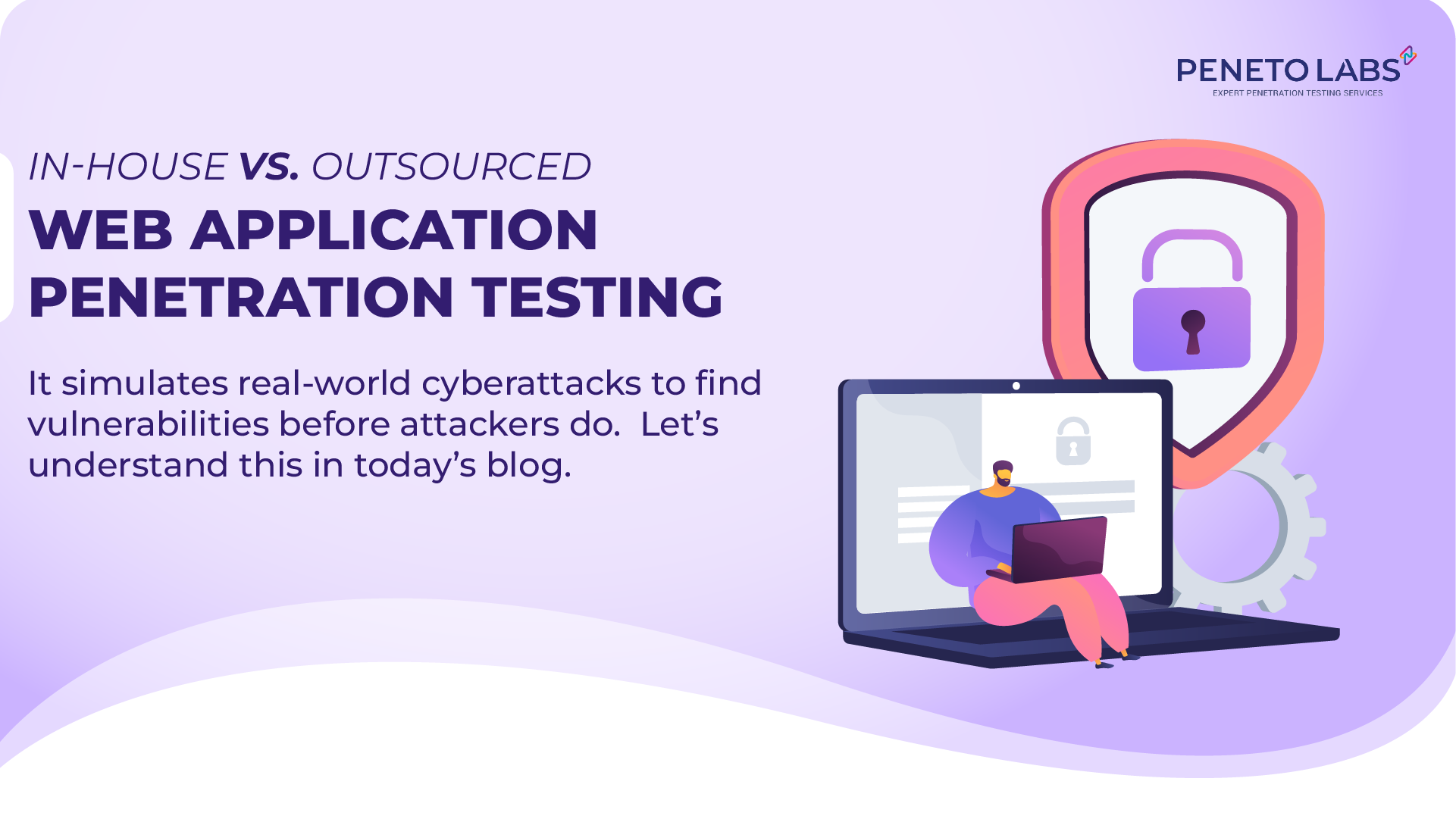From banking portals to e-commerce websites, web applications store sensitive customer data and power daily operations. But with this convenience comes risk. Hackers constantly look for weaknesses to exploit. That’s why performing web application penetration testing is essential.
It simulates real-world cyberattacks to find vulnerabilities before attackers do. But one question remains, should you build an in-house penetration testing team or outsource the task to a professional vendor? Let’s understand this in today’s blog.
What Is In-House Web Application Penetration Testing?
In-house testing means hiring and training your own security professionals. These testers work as part of your organization’s IT or security team. They conduct web application penetration testing whenever you need it and remain on call for emergencies.
Advantages of In-House Testing:
- Familiarity with systems: Your team knows the applications, workflows, and business logic inside out.
- Immediate availability: Internal testers can act quickly after new code deployments or security incidents.
- Full control: You decide the testing scope, tools, and processes.
Limitations of In-House Testing:
- High cost: Recruiting certified pentesters is expensive. Retaining them costs even more.
- Skill gaps: Many in-house teams do not have exposure to diverse and complex attack patterns.
- Scalability issues: Handling multiple applications or frequent updates may overwhelm small teams.
What Is Outsourced Web Application Penetration Testing?
Outsourced testing means hiring a specialized vendor to test your applications. These vendors are usually CERT-In empanelled companies with certified pentesters and proven methodologies.
Advantages of Outsourcing:
- Expertise on demand: Certified testers bring fresh perspectives and advanced skills.
- Cost-effective: You pay only for the project, without bearing long-term HR expenses.
- Comprehensive coverage: Vendors combine manual and automated testing to catch even complex vulnerabilities.
- Regulatory alignment: Reports are compliance-ready, often matching CERT-In or industry regulations.
- Scalability: Vendors can handle multiple apps or large enterprise projects with ease.
Limitations of Outsourcing:
- Less familiarity: Vendors need time to understand your application and workflows.
- Scheduling: Testing may depend on vendor timelines.
In-House vs. Outsourced Web Application Penetration Testing Comparison Table
| Parameter | In-House Web Application Pentesting | Outsourced Web Application Pentesting |
| Cost High (hiring, training, tools, certifications) | Flexible pricing | Pay per engagement |
| Expertise | Limited to team’s knowledge and certifications | Access to certified specialists (OSCP, OSCE, GWAPT, etc.) |
| Tools & Techniques | May rely heavily on automated tools due to budget | Combination of advanced tools + manual exploit testing |
| Scalability | Difficult to scale quickly for large projects | Easily scalable with vendor’s larger team |
| Unbiased Results | May suffer from internal bias or overlooking flaws | Independent, third-party perspective ensures thoroughness |
| Compliance | Harder to align with CERT-In or industry regulations | Reports aligned with CERT-In and regulatory frameworks |
| Retesting | Depends on internal bandwidth, may face delays | Vendors often provide free or discounted retesting |
| Time to Deliver | Longer due to limited team capacity | Faster turnaround with dedicated expert teams |
| Industry Exposure | Limited exposure to real-world attack patterns | Wide exposure from working with multiple industries |
| Best For | Large enterprises with big budgets & continuous needs | Startups, SMBs, regulated sectors needing certified audits |
Key Factors to Consider Before Choosing In house or Outsourced web application security testing
When deciding between in-house vs. outsourced web application security testing, ask:
- Budget: Can you afford a permanent team of certified experts?
- Regulatory Needs: Does your sector demand audits by a CERT-In empanelled vendor?
- Complexity of Apps: Do your applications involve APIs, third-party integrations, or sensitive financial data?
- Frequency of Testing: Do you need frequent, continuous testing, or periodic audits?
- Internal Skills: Does your team have the expertise to detect logic flaws and chained exploits?
Some organizations use a mix of both. Internal teams perform regular checks, while external vendors conduct deep-dive web application penetration testing for compliance, critical updates, or before launches. This ensures speed and expertise without overwhelming internal teams.
Professional Outsource Web Application Pentesting with Peneto Labs
At Peneto Labs, we specialize in web application penetration testing for enterprises across banking, fintech, healthcare, travel, and SaaS industries. As a CERT-In empanelled vendor, our certified testers (OSCP, OSCE, GWAPT, GCIH) provide manual plus automated testing for complete coverage.
We deliver:
- Compliance-ready reports aligned with CERT-In requirements.
- Direct collaboration with your IT and compliance teams.
- Free retesting within the audit window.
- Safe-to-Host readiness support.
Outsourcing to Peneto Labs means saving costs while gaining expert, unbiased, and regulator-trusted testing. Call us today to know more!
